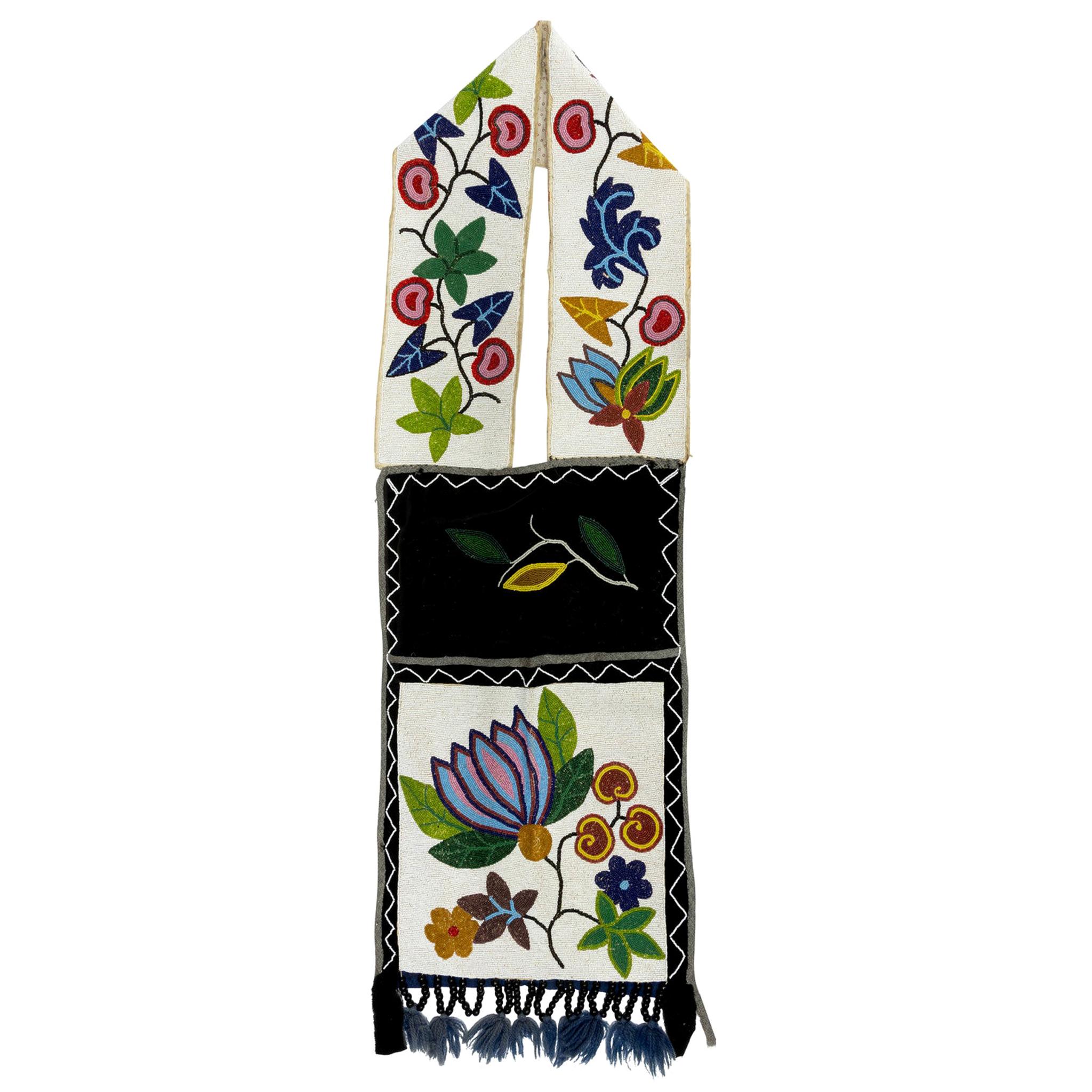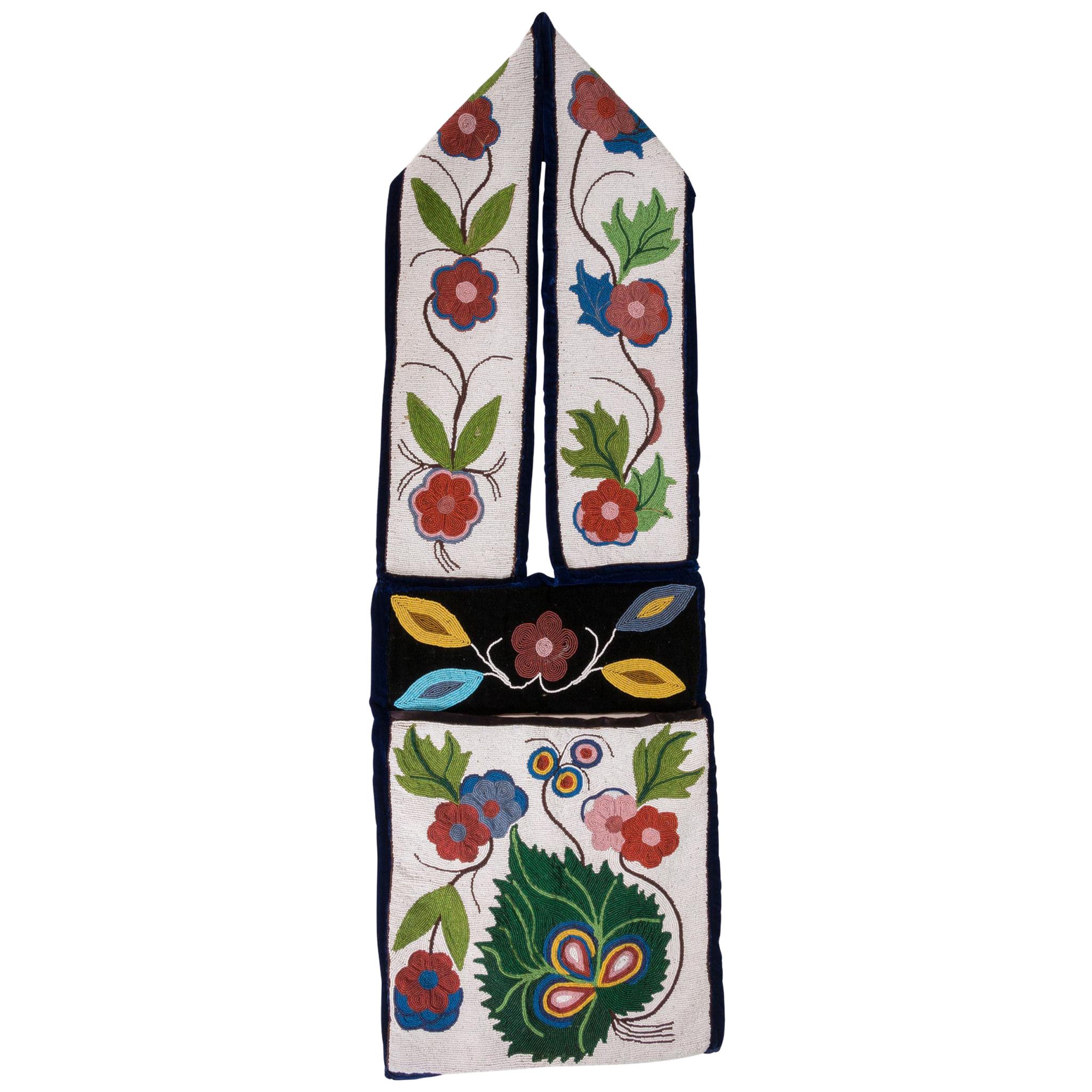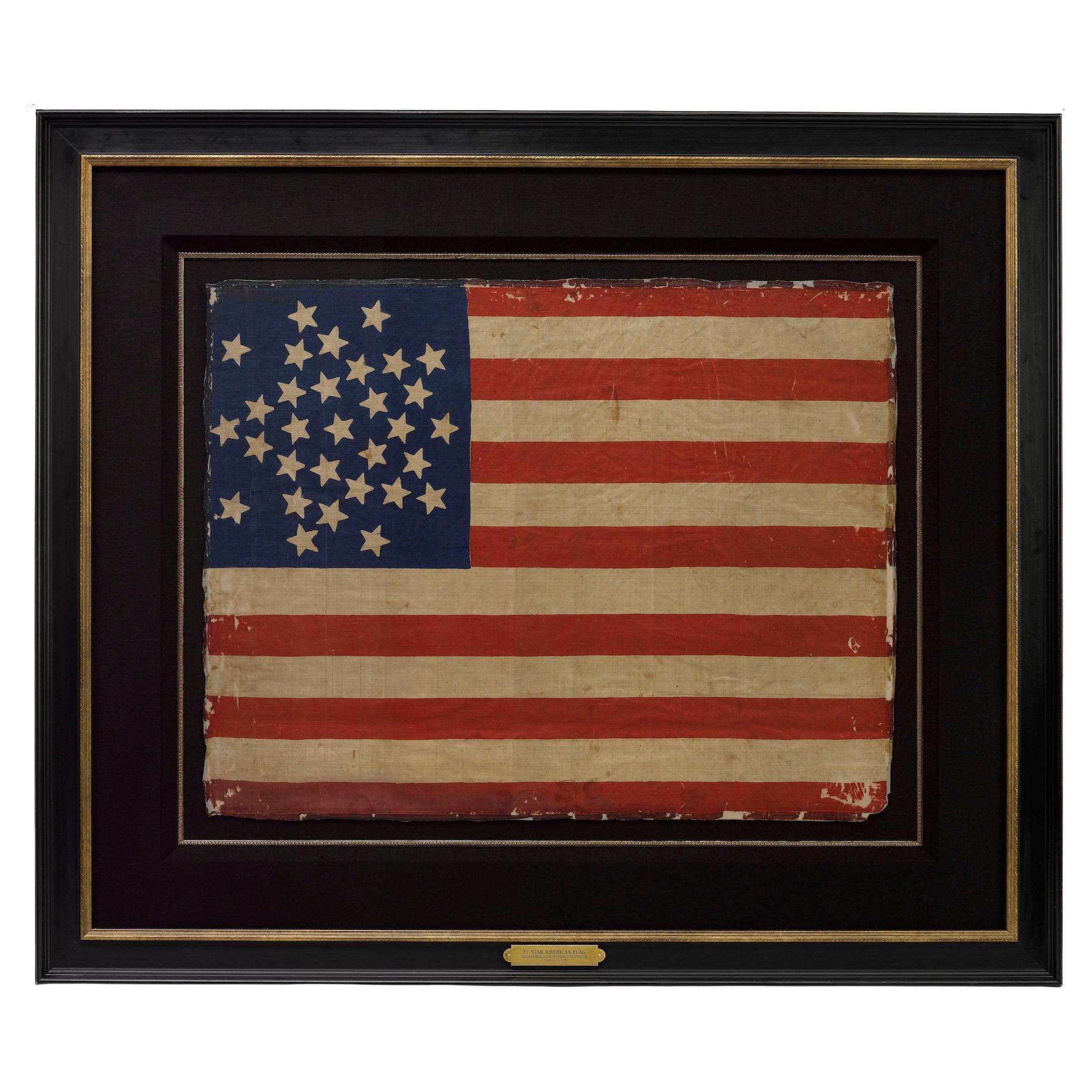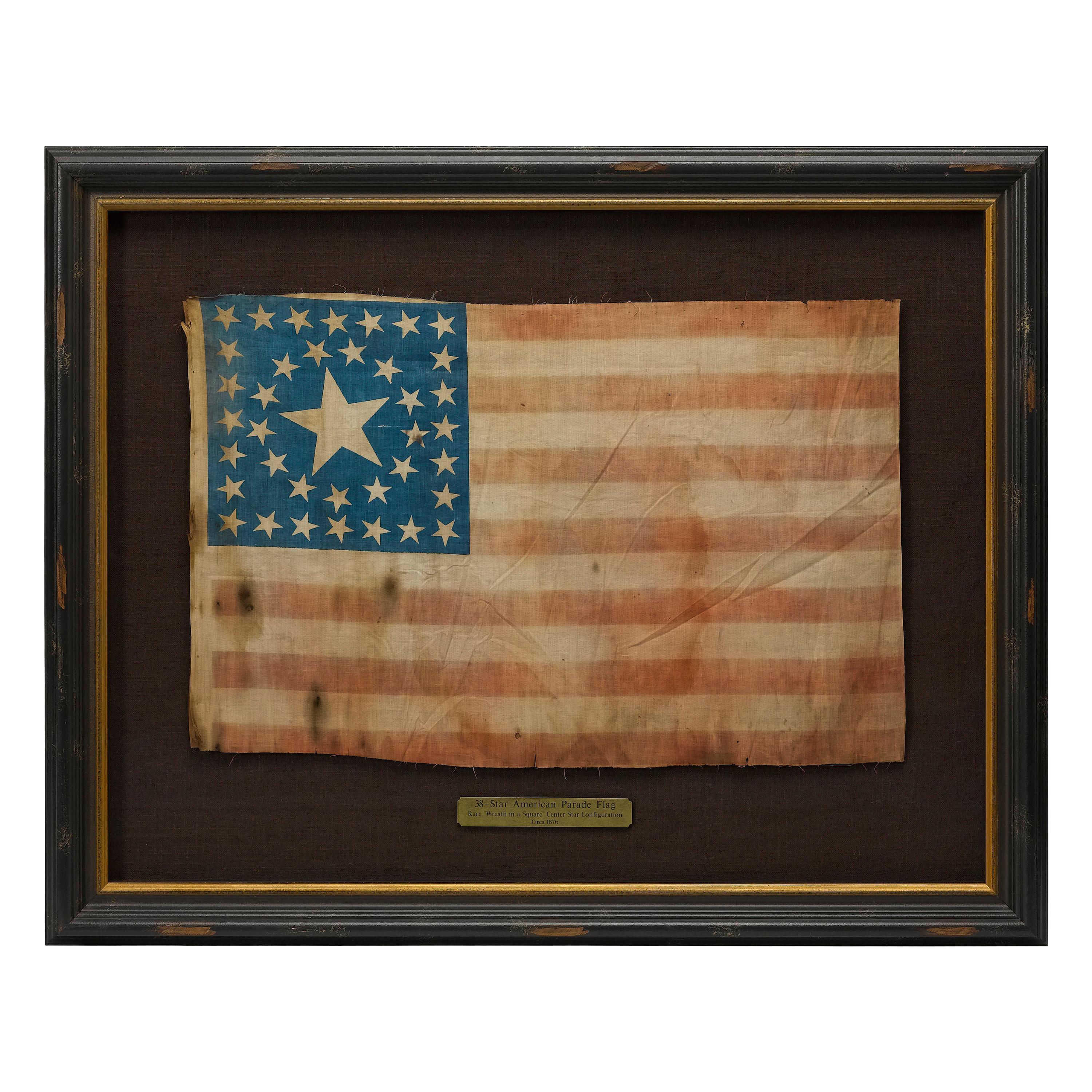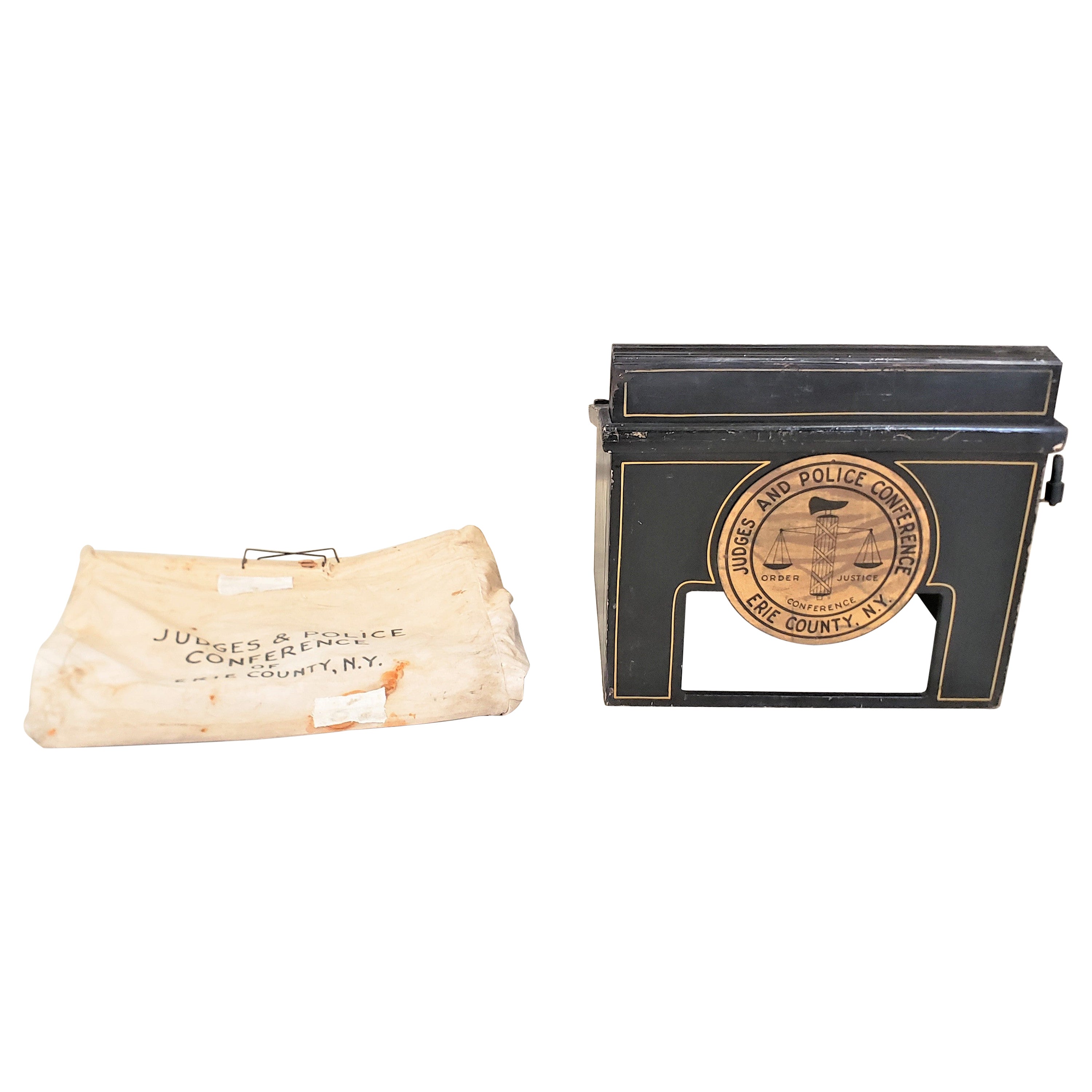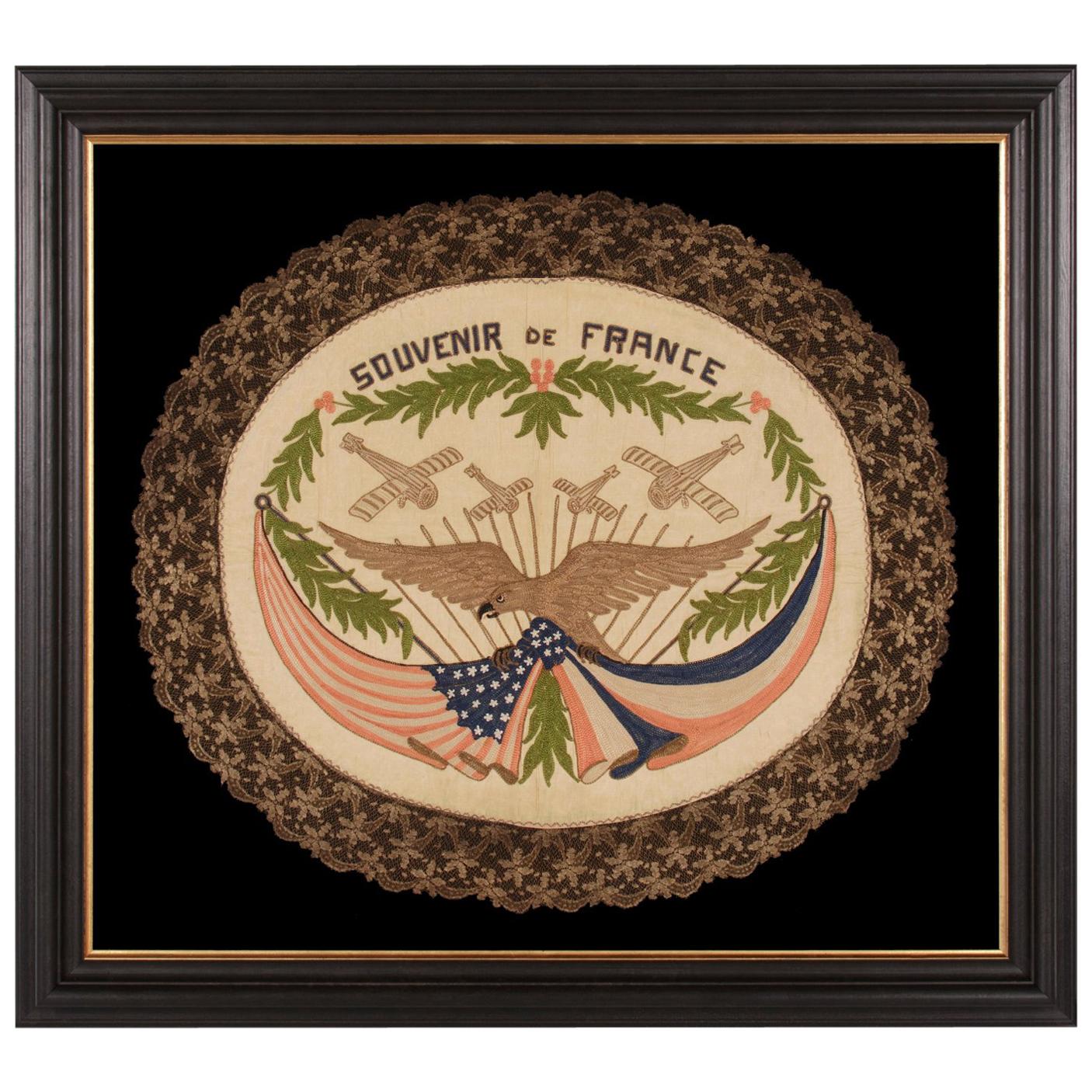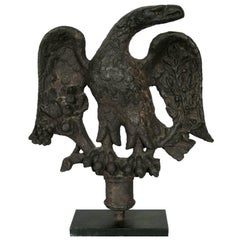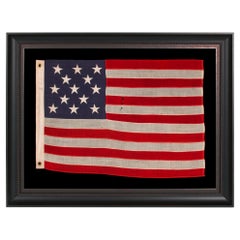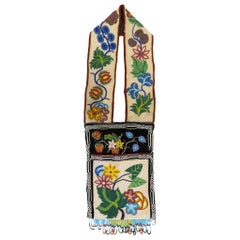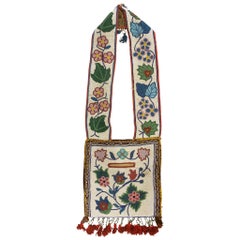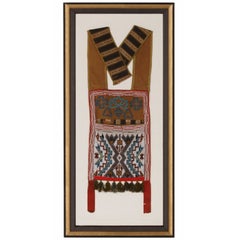
Chippewa or Winnebago, Native American, Beaded, Bandolier Bag, circa 1880
View Similar Items
Want more images or videos?
Request additional images or videos from the seller
1 of 8
Chippewa or Winnebago, Native American, Beaded, Bandolier Bag, circa 1880
About the Item
- Dimensions:Height: 38.75 in (98.43 cm)Width: 18 in (45.72 cm)Depth: 3 in (7.62 cm)
- Materials and Techniques:Beads
- Place of Origin:
- Period:
- Date of Manufacture:1880
- Condition:See Item Description.
- Seller Location:York County, PA
- Reference Number:Seller: otx-0101stDibs: LU84973054652
About the Seller
5.0
Recognized Seller
These prestigious sellers are industry leaders and represent the highest echelon for item quality and design.
Established in 1991
1stDibs seller since 2008
60 sales on 1stDibs
Typical response time: 13 hours
More From This SellerView All
- Franco-American Textile with the Image of an Eagle Holding the American and FlagLocated in York County, PAFranco-American textile with the image of an eagle supporting knotted and draped american and French flags beneath four war planes; embroidered silk floss and metallic bullion thread...Category
Mid-20th Century American Political and Patriotic Memorabilia
MaterialsSilk
- American Federal Period Cast Iron EagleLocated in York County, PAThis cast iron eagle is one of the earliest sculptural forms that one will encounter in the marketplace. It is also one of the most attractive and ico...Category
Antique 1810s American Political and Patriotic Memorabilia
MaterialsIron
- 13 Star Antique American Flag, ca 1895-1926Located in York County, PA13 STAR ANTIQUE AMERICAN FLAG WITH A 3-2-3-2-3 CONFIGURATION OF STARS ON AN INDIGO CANTON, SQUARISH PROPORTIONS, AND A BEAUTIFUL OVERALL PRESENTATION, MADE circa 1895-1926 This 13 s...Category
Antique Late 19th Century American Political and Patriotic Memorabilia
MaterialsWool
Price Upon Request - 13 Star Antique American Flag , Ca 1890-1899Located in York County, PA13 STARS WITH SHORT, CONICAL ARMS ON A SMALL SCALE, ANTIQUE AMERICAN FLAG MADE DURING THE LAST DECADE F THE 19TH CENTURY; POSSIBLY OF PHILADELPHIA ORIGIN; FORMERLY IN THE COLLECTION ...Category
Antique 1890s American Political and Patriotic Memorabilia
MaterialsWool
Price Upon Request - Pressed Brass Eagle, Parade Flag Holder and Bunting Tie Back, ca 1880-1895Located in York County, PAPressed brass eagle, an early parade flag holder & bunting tie-back, an especially attractive example, circa 1880-1895 Pressed brass eagles decorated the interiors of Civil War ve...Category
Antique Late 19th Century American Political and Patriotic Memorabilia
MaterialsBrass
- 36 Star American Flag, Civil War Era, Nevada StatehoodLocated in York County, PA36 Stars In The "Great Star" Or "Great Luminary" Pattern On A Civil War Era Flag With A Dusty Blue Canton And A Section Of One Stripe Souvenired, 1864-67, Nevada Statehood 36 star American national flag of the Civil War era, entirely hand-sewn and with some rare and beautiful features. The stars are arranged in a rendition of what is known as the Great Star or Great Luminary configuration, a large star made out of smaller stars. With no official star pattern before 1912, their design was left up to the artistic liberties of the flag-maker. Strikingly visual, the Great Star is both scarce and coveted by collectors. The 36th state, Nevada, entered the Union during the Civil War on October 31st, 1864. The last Confederate general surrendered on May 26th, 1865. The 36 star flag became official on July 4th of that year, but makers of printed flags would have begun adding a 36th star to their flags in 1864, even before the addition of the new state occurred. Lincoln pushed Nevada through just 8 days before the November election. Nevada’s wealth in silver was attractive to a nation struggling with the debts of war and increased support for the Republican ticket. The 36 star flag was replaced by the 37 star flag in 1867, with the addition of Nebraska. Adding to the flag's appeal is its small scale across those with of piece-and-sewn construction. During the 19th century, sewn flags (as opposed to those that were printed on cloth) were typically eight feet long and larger. This is because they were important in their function as signals, meaning that they needed to be seen and recognized from great distance. A flag that was six feet in length was considered small and production of flags smaller than this was extremely limited. Even infantry battle flags were approximately six by six and-one-half feet, about the size of an average quilt of the same period. As time passed, circumstances changed and sewn flags began to find more of a decorative purpose. Smaller flags are more scarce and far easier to frame and display. The Great Star configuration appears to have come about shortly after the War of 1812, when Congressman Peter Wendover of New York requested that Captain Samuel Reid, a War of 1812 naval hero, create a new design that would become the third official format of the Stars & Stripes. A recipient of the Congressional Medal of Honor, Reid became harbor master of New York following the war. During his lifetime, he created many innovations in signal use, including a system that could actually send messages from New York to New Orleans by sea in just two hours. Use as a Naval signal had been the primary reason for the initial creation of an American national flag in 1777, but since there was no official star design, the appearance of our flag varied greatly. Reid’s primary concern centered on both consistency and ease of recognition. His hope was as more and more states joined the Union and more and more stars were added to the flag, that it would remain easily identified on the open seas. In 1818, Reid suggested to Congress that the number of stripes permanently return to 13 (reduced from 15) and that the stars be grouped into the shape of one large star. Reid’s proposal would have kept the star constellation in roughly the same format, in a pattern that could be quickly identified through a spyglass as the number of states grew. His concept for the stripes was ultimately accepted, but his advice on the star pattern was rejected by President James Monroe, due to the increased cost of arranging the stars in what would become known as the “Great Star”, “Great Flower”, or “Great Luminary” pattern. Monroe probably didn’t wish to impose this cost on either the government or civilians, so he suggested a simple pattern of justified rows. Never-the-less, the Great Star was produced by anyone willing to make it and its rarity today, along with its beauty, has driven the desirability of American flags with this configuration. The canton and stripes of the flag are made of fine merino wool. Note how the canton has faded to a dusty seafoam blue, which is endearingly attractive. The stars of the flag are hand-sewn and single-appliquéd. This means that they were applied to one side of the canton, then the blue fabric was cut from behind each star, folded over, and under-hemmed, so that one star could be viewed on both sides of the flag. I always find single-appliquéd stars more interesting, not only because they are evidence of a more difficult level of seam-work and stitching, but also because they are more visually intriguing. The two visible rows of hand-stitching emphasize their hand-sewn construction, which is one reason why flags with single-appliquéd stars often appeal to connoisseurs of early American textiles...Category
Antique 1860s American Political and Patriotic Memorabilia
MaterialsWool
Price Upon Request
You May Also Like
- 19th Century Native Chippewa Beaded BandolierLocated in Coeur d'Alene, IDExtra-large Chippewa beaded bandolier bag with full pocket. Black bead drops ending in blue yarn. Bright and visual vintage piece of Native Americ...Category
Antique 1890s American Native American Native American Objects
MaterialsBeads
- 19th Century Native Chippewa Beaded BandolierLocated in Coeur d'Alene, IDChippewa fully beaded bandolier bag with full size pocket, floral beading on intermediate panel and delicate edge beading and faceted bead drops. ...Category
Antique Late 19th Century American Native American Native American Objects
MaterialsOther
- 19th Century Native Chippewa Beaded BandolierLocated in Coeur d'Alene, IDChippewa bandolier bag with a pocket. Unique outer edging around center bag with bugle beads, and white and red bugle beads ending in white tuffs at bottom. Matching shoulder straps having bugle beads and green fringe at divide. Nice and visual vintage piece of Native American...Category
Antique 1890s American Native American Native American Objects
MaterialsOther
- 19th Century Chippewa Beaded BandolierLocated in Coeur d'Alene, IDGenuine Native American Chippewa floral beaded bandolier bag with full size pocket. Intermediate panel beaded on black velvet. Matching shoulder s...Category
Antique 1890s American Native American Native American Objects
MaterialsBeads
- Native American Chippewa Catlinite T-PipeBy Native American ArtLocated in Coeur d'Alene, ID19th century Chippewa pipe with weeping hearts. Long stem Chippewa T-pipe with file burnt stem and steatite bowl having red Catlinite weeping hearts and pewter inlay. The bowl is squ...Category
Antique Mid-19th Century American Native American Tobacco Accessories
MaterialsOther
- 19th Century Native Sauk Beaded BandolierLocated in Coeur d'Alene, IDGenuine geometric Native American Sauk people bandolier bag with loom beaded geometric panels. Blue and black yarn tuffs. Minor deterioration on red salvage, not distracting. Great v...Category
Antique 1890s American Native American Native American Objects
MaterialsBeads
Recently Viewed
View AllMore Ways To Browse
1880 Fabric
Furniture 1880 To 1900
Beaded Panel
Bead Bag
Beaded Straps
White Beaded Top
Antique Bead Work
Leather Fringe Bag
Two Centuries Of Black American Art
Antique Black Beads
Old Antique Beads
Native American Gold
19th Century American Politics
Fringe Bag Black
Leather Framed Top Bag
Bag With Stripes
Red And Green Bag
Party Bag
